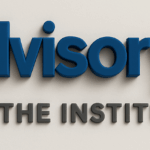The foundation of success or failure of businesses in the digital age sits squarely on how IT Leadership engages with staff.
We are living in a time in which we will experience change at a pace more rapid and unpredictable than at any other juncture to date. Organizations have much to consider as they evolve to be ever more cost efficient yet bring new flexibility and innovative competitive value to the customer. IT teams are being asked to reinvent their perspective as they face new pressures from changing customer expectations, changing technology, and changing competition in the market.
To leverage technologies like cloud, mobile, big data, social media, and IoT the relationships that IT has with the business and the relationship between IT leadership and the IT teams themselves, have never been more pivotal to the business’ success. At the center of this the IT Leader must play orchestra conductor and masterfully integrate new skills, disciplined processes, and new thinking across all players in the digital enterprise.
With so many day-to-day demands already in play, how do you break away from doing what you’ve always done and expose a reinvented IT team; a team that is free to work fresh, one that can collaborate, experiment, and feel safe working outside of old guardrails? How do you unleash the team to excel and find quickened stride as a truly digital business?
The first step is to start with team culture and an unparalleled commitment to employee engagement.
Employee Engagement in the Digital Age
In 2014 APQC1 conducted a study to link business innovation to employee engagement. In this exercise they worked with three organizations they determined to be “best practice organizations” (3M, Infosys, and Schlumberger) which have “been able to explicitly link their work in employee engagement with specific positive business outcomes.”
In this study it was clear that each company used various methods to engage with the staff, for example: employee surveys, field visits, routine discussions between HR and employees, among other programs. But, no matter the methodology for engagement, one of the most intriguing revelations the study brought to light is that, “successful employee engagement is not a set of practices or a program but rather, a journey woven into the organizational culture and integrated with the other key aspects of talent management.”
So while organizations can implement tools, processes, and directives related to engagement, one can also affirm it is equally important that the innate culture must carry authenticity around the purpose and a commitment to caring for and developing the staff. Employees know when management lives and breathes what it expounds, or is simply pontificating.
In a 2015 webinar on How to Become a Great Workplace 2 given by Great Place to Work®, the speaker states these elements, among a few others, are required for a great culture:
- Communication (ask leadership a “reasonable question and get a straight answer”)
- Competence (leadership “has a clear view of where the organization is going and how to get there”)
- Caring (leadership “shows a sincere interest in me as a person, not just an employee”)
Let’s take this one step farther and marry what this means to the digital business: productivity, dedication, and thriving, hard work focused on directed results will flow, if leadership is clear in the strategic mission, transparent in what role each team member plays in meeting the mission, and understands the value of the people it employs. Layered on top of all of this, but equally critical to all parts combined, leadership must sincerely want to guide and support the “journey” of the employees’ growth and contributions to the organization.
The Digital Age Forces Us To Embrace the Uncomfortable
All of these components will be needed as you transform your team to meet the challenges and opportunities of the digital age. This is because there is inevitable “uncomfortableness” when roles change, when new skills and resources are brought onto the team, and when some roles are commoditized, making employee reduction necessary. Despite the anxiety that can creep through the team due to this shift, a strong, affirmative culture can not only hold the team forces together, but renewed energy to embrace the change is possible among the team. Deeply coaching your staff through this shift cannot be undervalued.
Maintaining a talented staff that is dedicated, highly productive, and tuned towards agile innovation requires commitment to a culture that nurtures employee engagement at the core. Embracing transparent communication, clear planning, and authentic compassion for the employees can actually allow you to capitalize productively on the levers of digital change. A willingness and appreciation for authentic engagement is more critical than ever for enabling competitive advantage as you navigate the ambiguity of the fast evolving digital age.
Sources:
1 Report: Rewarding, Engaging, and Retaining Key Talent, APQC Accessed February 2016
2 Webinar, presented by Great Place to Work®’s Erin Bartulski, APQC, recorded June 2015, Accessed February 2016
About the Author:
Tag/s:Digital Era






Let me distill the excellent & concise piece into the Engagement Challenge:
1. “successful employee engagement is not a set of practices or a program but rather, a journey woven into the organizational culture and integrated with the other key aspects of talent management.”
2. We see again the critical role of culture, the demand for authenticity & real commitment from leadership
3. The real challenge in transformation is how to break through legacy mindset & processes – the strength of change vision needed, and the strength of leadership commitment to follow through, it can only be a fully top down “walk the talk” sustained effort.